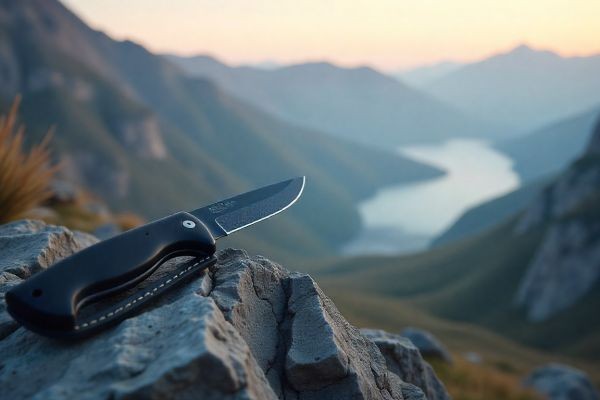Hunting is a craft that demands preparation, skill, and the right tools. At the heart of any hunter’s gear is a blade that can handle the challenges of the wild. Whether you’re new to the hunt or a veteran of the backcountry, choosing a blade that fits your needs is critical. This guide breaks down what makes a great hunting blade, from design to functionality, helping you make an informed choice for your next trip.
The Role of a Blade in Hunting
A blade is more than a tool; it’s a partner in the field. From field-dressing game to setting up camp, a well-chosen blade makes tasks easier and safer. Hunters need a tool that’s sharp, sturdy, and easy to handle, especially in rugged environments where reliability is everything. Understanding the features that matter can help you find a blade that feels like an extension of your hand.
Tasks a Blade Must Handle
A hunting knife serves multiple purposes in the wild:
- Field-Dressing: Cleanly process game to preserve meat quality.
- Skinning: Remove hides with precision to avoid waste.
- Camp Tasks: Chop wood, prepare food, or build shelters.
- Survival: Craft tools or handle emergencies in remote areas.
These tasks demand a blade that’s both versatile and dependable.
Why Fixed Blades Shine
Fixed blades are a hunter’s go-to for their strength and simplicity. Unlike folding knives, they have no moving parts, reducing the risk of failure during critical tasks. Their full-tang design—where the blade extends through the handle—provides the power needed for heavy jobs like quartering game or batoning wood.
Key Features of a Great Blade
When shopping for a blade, focus on features that enhance performance and durability. A good hunting knife balances sharpness, strength, and comfort, ensuring it can handle the demands of the outdoors without letting you down.
Blade Materials and Their Impact
The material of the blade affects its performance:
- High-Carbon Steel: Holds a sharp edge longer but requires care to prevent rust.
- Stainless Steel: Resists corrosion, making it ideal for wet or humid conditions.
- Damascus Steel: Offers a blend of strength and beauty, often found in premium blades.
Handle Materials for Control
A comfortable, secure handle is essential. Popular options include:
- Micarta: Durable and grippy, even in wet conditions.
- Antler: Rustic and reliable, with a natural feel.
- Wood: Classic and comfortable, though it may need extra care.
Choosing a Blade for Your Hunt
Selecting the right blade depends on your hunting style and environment. Consider the game you’re pursuing—large animals like elk need a robust blade, while small game calls for precision. Factor in the terrain and weather, as wet conditions may favor stainless steel. Test the blade’s balance and grip to ensure it feels natural during long tasks.
Blade Shape and Size
- Drop Point: Ideal for skinning and slicing, with a strong tip.
- Clip Point: Great for detailed work on smaller game.
- Gut Hook: Specialized for field-dressing, minimizing damage to meat.
- 3-5 Inch Blades: Versatile for most hunting and camp tasks.
Keeping Your Blade in Top Shape
A well-maintained blade is a reliable one. Regular sharpening ensures it’s ready for action, while proper cleaning prevents corrosion. Store your blade in a quality sheath to protect it between uses, and oil it to guard against rust, especially in humid environments.
Maintenance Tips
- Sharpen Before Trips: Use a whetstone for a precise edge.
- Clean After Use: Remove blood and debris, then dry thoroughly.
- Store Safely: Keep in a dry, secure sheath to prevent damage.
- Oil Regularly: Apply a light coat of oil to protect against corrosion.
FAQ
What’s the difference between a hunting blade and a survival blade?
A hunting blade is optimized for processing game, like skinning or gutting, while a survival blade is designed for broader tasks like building shelters or chopping wood.
Which blade shape is best for field-dressing?
A gut-hook blade is ideal for field-dressing, as it allows clean cuts through hides without damaging organs.
How do I prevent my blade from rusting?
Clean and dry your blade after use, store it in a dry sheath, and apply a thin layer of oil, especially for carbon steel blades.
Can a hunting blade double as a camping tool?
Yes, many hunting blades are versatile enough for camp tasks like preparing food or cutting kindling, especially drop-point designs.

